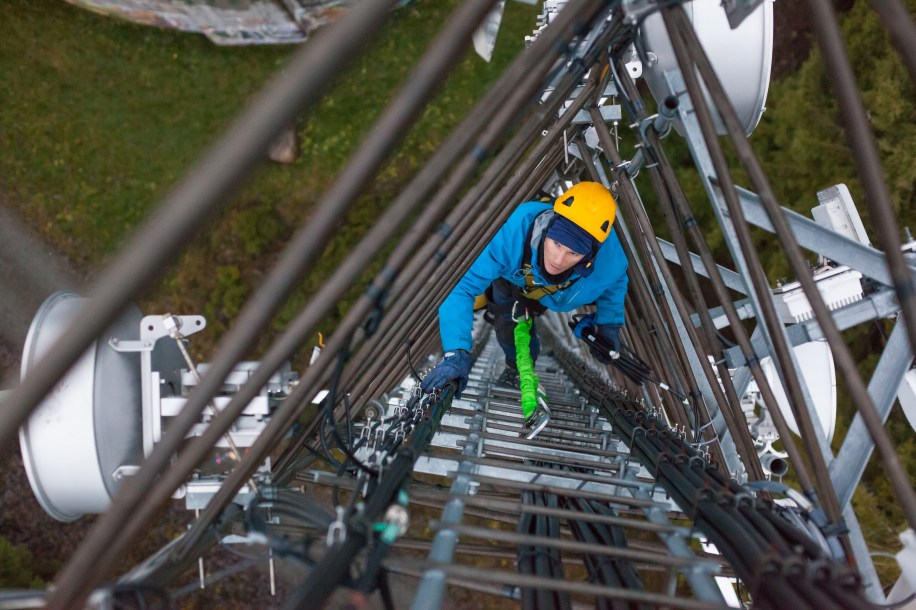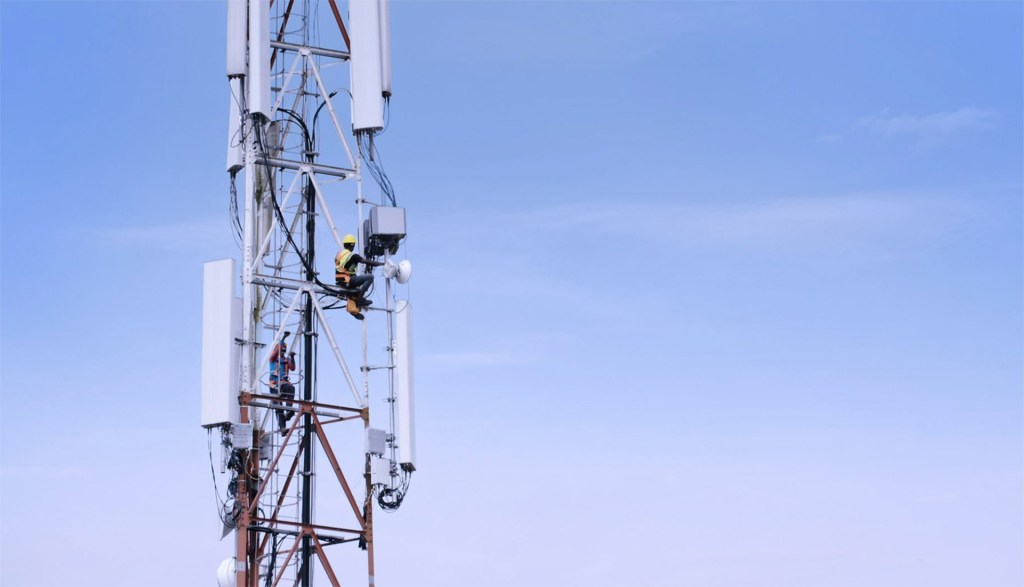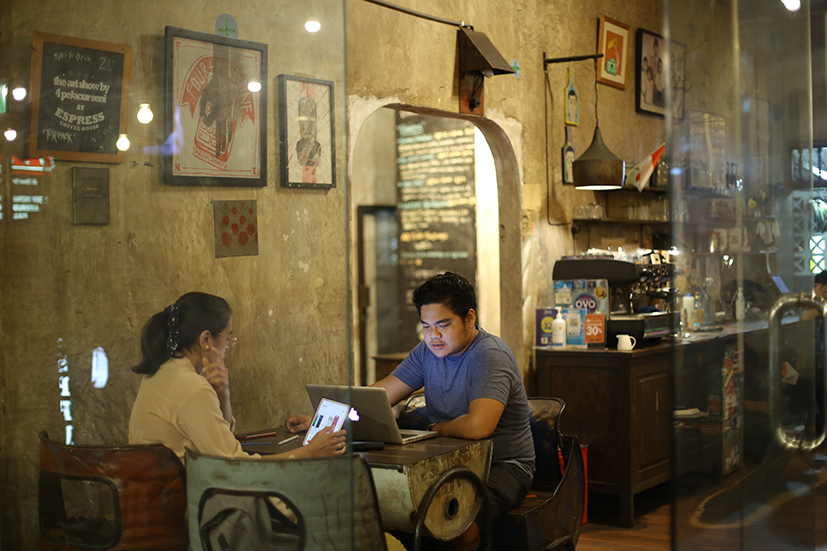Connectivity is an integral part of Facebook’s mission to bring people closer together, and the COVID-19 pandemic has only heightened the demand for critical internet access. According to the latest edition of our Inclusive Internet Index, nearly 70 percent of people around the world believe that increased internet usage in all aspects of their lives signified a “new normal” that will continue indefinitely in the future. But at the same time, nearly half of the world’s population remains unconnected or underconnected to the internet.
At Facebook, we’ve been collaborating with partners all over the world to enable better connectivity, with the goal of bringing more people online to a faster internet. There is no silver bullet for connecting the world — we’re focused on developing programs, technologies, and business models that increase the availability and affordability of high-quality internet, particularly in underconnected regions. This includes driving innovations around open, disaggregated solutions that are important for unlocking new ways to sustainably expand and improve connectivity for people all over the world.
At MWC 2021, we’ll be sharing several updates on our work with partners to help bridge the digital divide.
Promoting shared network infrastructure at scale to accelerate broadband connectivity
The emergence of digital economies and demand for internet services means the telecom industry needs to build and scale networks that are larger and more efficient than ever before. By investing in shared infrastructure, the industry can work together to reduce the costs of delivering data and improve network reliability and speeds — providing affordable, fast, high-quality connectivity for the communities they serve. In collaboration with our partners, we’ve invested in 10,000 kilometers of terrestrial fiber around the world to date, along with 37,000 kilometers of subsea fiber with 2Africa. Together, these investments will help bring hundreds of millions of people to a faster internet across Africa, the Middle East, and the Asia-Pacific region over the next five years.
As part of our commitment to address fiber gaps in the Democratic Republic of Congo (DRC), we’re announcing a partnership with Liquid Intelligent Technologies to build 2,200 kilometers of fiber to increase active long-haul fiber and further improve connectivity in DRC. This build will complete a missing fiber link between East and West Africa, and establish DRC as a connection hub for neighboring landlocked countries, including Rwanda, Uganda, and Zambia. Together with 2Africa, this latest DRC network will promote open access infrastructure sharing and improve reliability and speeds for 30 million people in one of the least connected countries on the continent. This investment builds on our completion of DRC’s first privately held long-haul fiber route, from Muanda to Matadi.
We also continue to invest in the Asia-Pacific region. In Pakistan, we recently announced our first terrestrial fiber investment to support the country’s digital transformation. This is our second terrestrial fiber investment in Asia-Pacific. Our partner, Nayatel, will build 1,700 kilometers of open-access fiber to help address the growing demand for urban connectivity for 10 million people across eight cities. In Indonesia, we’re increasing our investment with Alita Praya Mitra to add fiber to the initial build areas and to additional cities to address the increasing demand for high-speed internet. These partnerships in Indonesia and Pakistan are part of our broader investments in the region, which include our Echo and Bifrost transpacific subsea cables, to support digital inclusion and economic growth, and advance connectivity globally.
Taking Magma to the industry to simplify network deployments

Since Magma was first released as an open source project at MWC Barcelona in 2019, it has continued to gain strong traction in the cellular industry. Today, we’re announcing a collaboration with Amazon Web Services (AWS) to integrate Magma with AWS’s edge computing services. Magma on AWS Marketplace will enable service providers to deploy 4G and 5G networks significantly faster by obtaining AWS infrastructure preinstalled with Magma for their business needs, no matter how large or small the deployment. With no licensing fees for the packet core software, Magma on AWS Marketplace will make fixed wireless and private network deployments quick and easy at a significantly lower cost of ownership.
Earlier this year, we announced that Magma will be brought under the Linux Foundation to establish a neutral governance framework with participation from the Open Infrastructure Foundation and the OpenAirInterface Software Alliance. As service providers around the world adopt Magma as their packet core of choice, the partner ecosystem continues to expand rapidly. Most notably, OEM partners such as Baicells and Blinq are developing deep integrations of their RAN solutions with Magma to provide a more simple, flexible, and open way to deploy networks.
Accelerating the OpenRAN ecosystem with Evenstar

We’ve seen through our work with the Telecom Infra Project that open, interoperable, and disaggregated technologies like OpenRAN can enable a more sustainable, robust supply chain and accelerate the pace of innovation. A recent study by Analysys Mason looked at the economic impact of open and disaggregated networks and found that OpenRAN has the potential to generate $285 billion in GDP globally by 2030 in the baseline case, and over $90 billion annually thereafter. This is a conservative estimate, assuming OpenRAN will be deployed in about half the global footprint of mobile networks by 2030.
We’re working to accelerate the adoption of OpenRAN through Evenstar — a program we announced last year to build RAN reference designs and software for 4G and 5G networks in the OpenRAN ecosystem. The Evenstar program has continued to grow and was recently included as part of Vodafone’s OpenRAN deployment plan in the U.K. In the last quarter, we added new supply chain partners, including Baicells, Marvell, MaxLinear, and Sterlite Technologies Limited. We’re also looking forward to commercial deployments in the next half in APAC and Europe to scale OpenRAN adoption.
Expanding Wi-Fi solutions for ISPs, MNOs, and SMBs

As widespread as Wi-Fi is, it’s still not ubiquitous. Expanding public Wi-Fi requires considerable investment by ISPs and MNOs, and monetizing the service to cover the investment is a challenge. That’s why we spend time engaging with the industry to help accelerate Wi-Fi — whether through enabling new technologies, expanding spectrum, or exploring new business models. Our goal is to develop Wi-Fi solutions that help ISPs, MNOs, and businesses make fast, affordable Wi-Fi available to people when and where they need it.
Today, our Express Wi-Fi platform is used by partners in more than 30 countries, including Brazil, India, Indonesia, Nepal, and Nigeria, helping millions of people connect to fast, affordable, and reliable Wi-Fi every month. In Nepal, for example, Worldlink has made affordable Wi-Fi available to more than 1 million people since deploying Express Wi-Fi in 2020. To help our partners further optimize and scale their Wi-Fi investments, we’ve rolled out several new analytics and monetization capabilities this past year. Partners can now access analytics highlighting metrics such as their revenue per access point; daily, weekly, and monthly active users; and seven-day paid traffic and sales. They can also leverage tools that make it easier for them to partner with local businesses on ad campaigns that they can serve to their customers in exchange for internet access. These tools give service providers more monetization options while addressing internet affordability barriers for Wi-Fi users.
We’ve also expanded Facebook Wi-Fi, which helps small and medium-sized businesses (SMBs) provide an easy-to-use guest Wi-Fi experience while increasing customer engagement and awareness. Today, more than 100,000 SMBs globally use Facebook Wi-Fi, helping millions of people connect to Wi-Fi every month while supporting small businesses, from coffee shops to event venues.
Facebook Wi-Fi now integrates with a business’s Instagram presence, giving people more ways to connect and SMBs more opportunities to engage with their customers. To get started, a business needs a Facebook Wi-Fi–compatible router, available through their service provider or through our growing network of OEM partners, such as EnGenius Technologies and Intelbras. Customers can then connect to the business’s Wi-Fi with their Facebook or Instagram logins, and are given the option to check-in to their Facebook page or follow the business on Instagram as a way of showing support.
Scaling Terragraph wireless connectivity through OEM partnerships
We’re seeing strong ecosystem growth around Terragraph, a gigabit wireless technology we developed to deliver fiberlike speeds over the air. Today, we’re announcing that MikroTik, a Terragraph licensee, has commercially launched a 60 GHz product line based on Terragraph. MikroTik’s latest Cube 60Pro series uses Terragraph to bring fast, reliable, longer-range connectivity to service providers around the globe.
To date, our OEM partners, including Cambium Networks, Edgecore Networks, Radwin, and Siklu, have shipped more than 20,000 Terragraph-enabled hardware products to more than 100 service providers and system integrators globally for a variety of applications such as fixed wireless access, Wi-Fi backhaul, and infrastructure connectivity. Most recently, Alaska Communications announced that it will begin deploying Terragraph-based solutions from Cambium Networks to deliver gigabit speeds to homes and businesses in Fairbanks and Anchorage.
We continue to invest in expanding Terragraph’s features and capabilities, including efforts such as advocating for delicensing 60 GHz spectrum in several countries, trialing new applications, and strengthening our channel to support service providers.
Using Connectivity Analytics to optimize network planning and execution
Analytics are critical to enabling better connectivity. Our suite of Connectivity Analytics tools leverage aggregated data to help our partners — including mobile network operators and equipment manufacturers — gain the insights they need to effectively build, grow, and optimize their network and product investments, while reducing the cost of providing high-quality internet.
In South Africa, for example, when the COVID-19 pandemic created a surge in internet usage all over the country, MTN used Connectivity Analytics to help prevent the connectivity issues this could have created. By using tools such as Connectivity Analytics to study latency, coverage, and device penetration, MTN was able to take immediate action and prioritize investments like operational interventions, increasing reliance on caching and peering, and deploying additional features on LTE. In the end, MTN was able to increase average download speeds by 30 percent and get ahead of other potential network issues.
We also partnered with TIM Brasil this past year to evaluate 325 new network sites in the Minas Gerais region, with the goal of improving network coverage and speed for between 600,000 and 1 million people. Using Connectivity Analytics, TIM Brasil got the insights it needed to more quickly prioritize and quantify a 4G network site plan to cover more than 300 communities and consider new network deployment opportunities. As a result, it was able to maximize impact and bring more people online. In partnership with TIM Brasil, we’re continuing to evaluate network plans for additional regions in Brazil to help improve connectivity. Facebook estimates the potential to connect more than 3 million people.
Find out more
If you’re attending MWC 2021, please join us and our partners for our virtual panels, where we’ll be discussing more about our open source innovations and OpenRAN strategies and solutions.
And visit the Facebook Connectivity website to learn more about how we’re working with our partners to improve global connectivity.










